Wisconsin is considered one of the states in America with the most lakes, behind Alaska and Florida. The upper Midwestern state is bordered by Lake Superior and Lake Michigan, the largest and third largest lakes in the United States by volume.
This article uncovers the number of lakes in Wisconsin and some of the most notable lakes in the state.
What is the Largest Lake in Wisconsin?
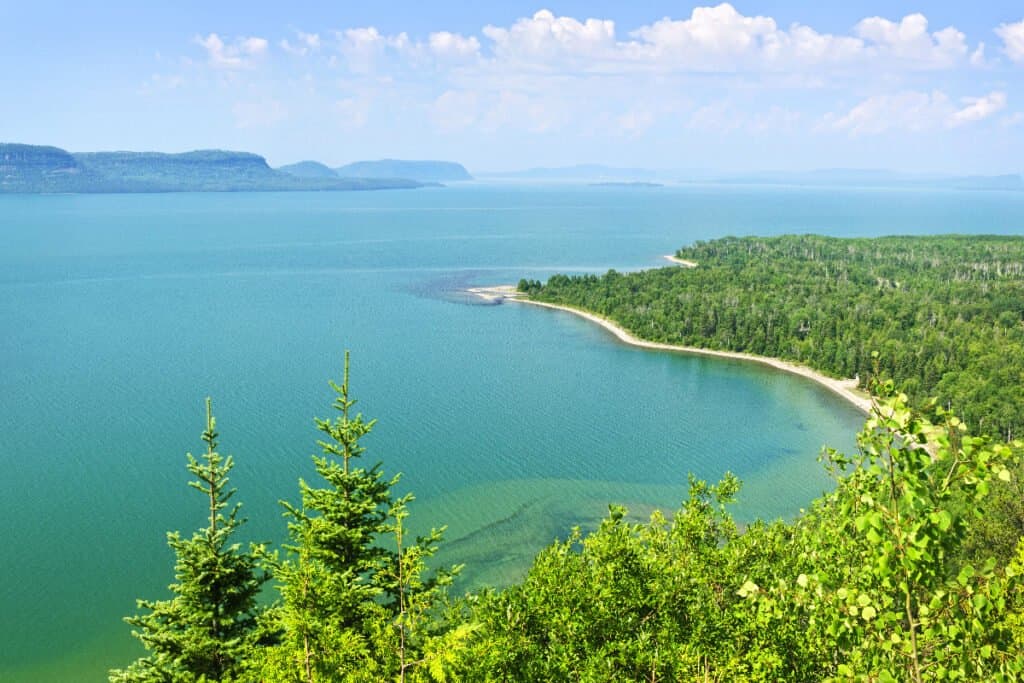
Lake Superior is the largest lake in Wisconsin and has a surface area of 20.288 million acres.
©Elena Elisseeva/Shutterstock.com
Lake Superior is one of the largest lakes in the United States, and it extends from Ontario in Canada to Wisconsin, Minnesota, and Michigan in the United States. The 20.288-million-acre (82,103 square-kilometer) lake is the largest of the Great Lakes and the second largest lake worldwide by surface area. Lake Superior has a maximum length of 350 miles (563.27 kilometers) and an average depth of 482 feet (146.91 meters), according to Global Great Lakes. Its deepest point is about 1,332 feet (405.99 meters).
Lake Superior has a volume of about 2,900 cubic miles (12,087.73 cubic kilometers) which is more than all the water in the other Great Lakes combined. Common fish species in Lake Superior are lake trout, whitefish, and lake herring.
What is the Deepest Lake in Wisconsin?
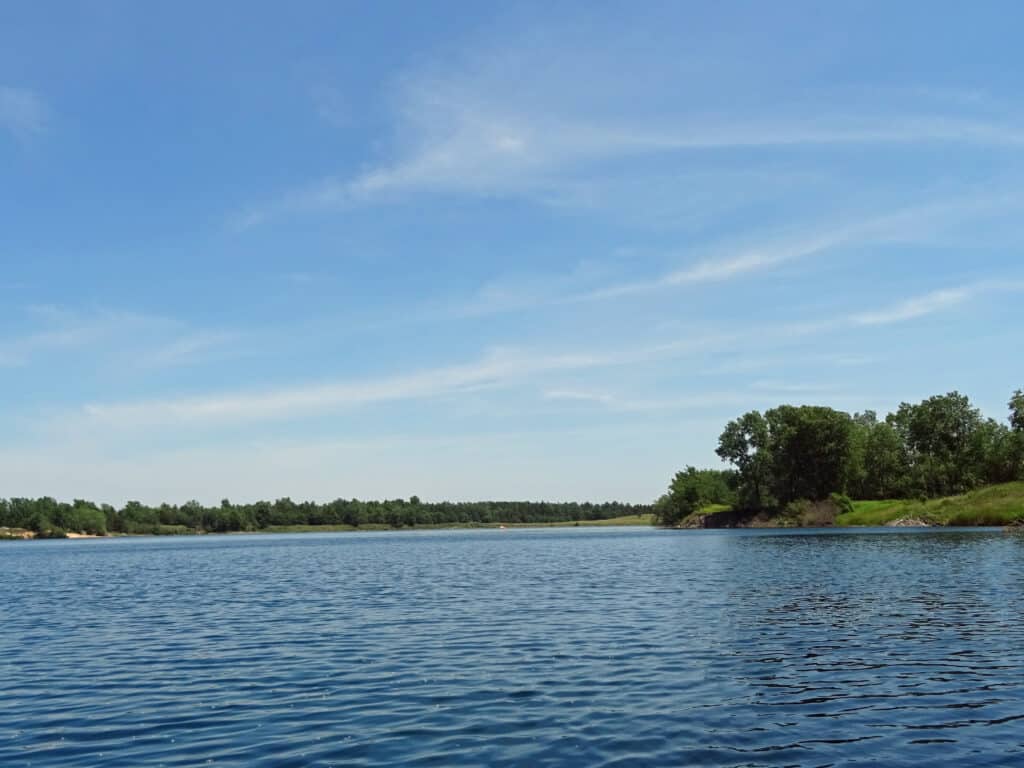
Wazee Lake is the deepest lake in Wisconsin, with a maximum depth of 350 to 355 feet.
©Maarten Daams/Shutterstock.com
Wazee Lake, which translates to ‘tall pine,’ is the deepest in Wisconsin. Located in Jackson County, it spans about 146 acres (0.59 square kilometers) and has a maximum depth between 350 feet and 355 feet (106.68-108.20 meters), according to the Wisconsin Department of Natural Resources. According to reports, the lake has a visibility of about 40 feet (12.19 meters) in the summer.
Due to the lake’s clarity and depth, Wazee Lake is considered a major diving spot in the state. Debris and pellets from the old Jackson County iron mine that was shut down in 1983 and prompted the birth of Wazee Lake can be found underwater. Some of the fishes found in the lake are warmouth and suckers.
How Many Lakes Are in Wisconsin?
According to the Wisconsin Department of Natural Resources, the state has about 15,000 lakes, and only 40% have names thus far.
5 Popular Lakes in Wisconsin
Wisconsin has a large number of lakes with their different sizes, depths, shorelines, unique fish species, marshes, and forests, but here are five of the most popular lakes in the state. They are:
1. Lake Winnebago
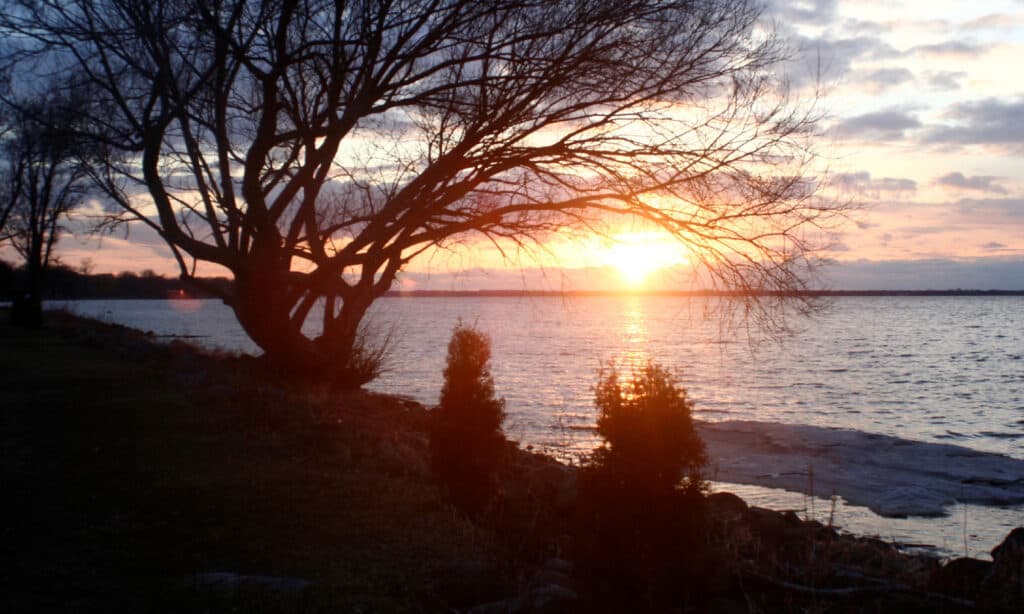
The biggest lake within Wisconsin’s boundary is Lake Winnebago.
©iStock.com/Laura Frohmader
Lake Winnebago is the third largest lake in Wisconsin and the biggest to exist solely within the state’s boundaries. The large lake has a surface area of 137,700 acres. The lake has a shoreline stretching about 88 miles but is shallow, with a maximum depth of 21 feet. A commonly found fish species in the lake is the walleye, which has night vision.
2. Lake Michigan
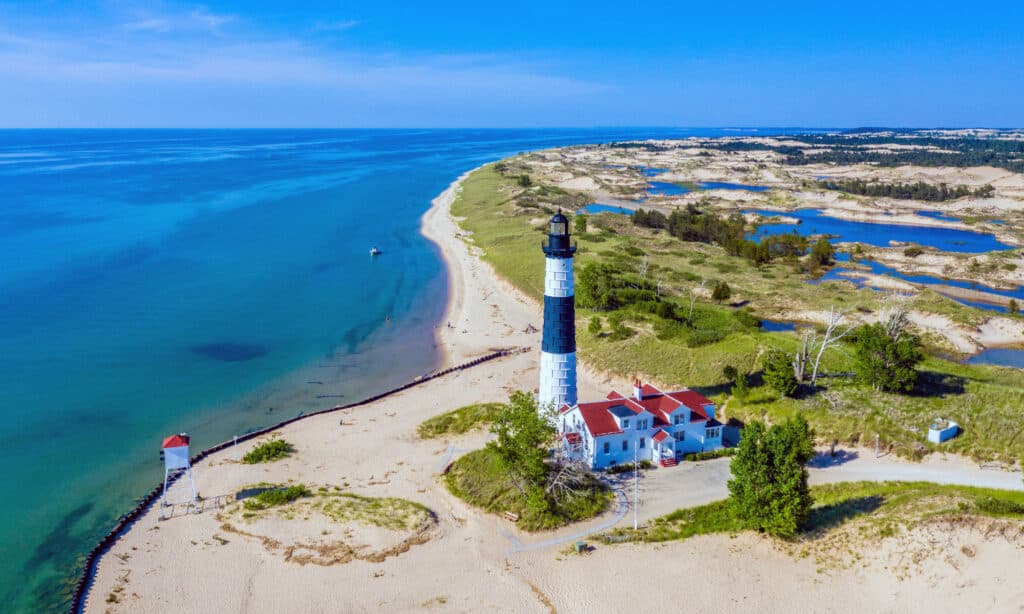
Lake Michigan is the second largest lake in Wisconsin, with a surface area of 14.34 million acres.
©Frederick Millett/Shutterstock.com
Lake Michigan is arguably one of the largest lakes on earth by volume and the second largest lake in Wisconsin despite being the smallest of the Great Lakes. The large lake is fully within the borders of the United States, touching Michigan, Illinois, Indiana, and Wisconsin. Lake Michigan has a surface area of 14.34 million acres (58,031.92 square kilometers) and a volume of about 1,200 cubic miles (5001.82 cubic kilometers). The lake’s maximum depth is about 923 feet (281.33 meters), making it one of the deepest lakes in the United States. Also, Lake Michigan has one of the largest freshwater sand dunes in the world.
3. Green Lake
Green Lake is Wisconsin’s deepest naturally occurring lake, with a maximum depth of 236 feet (71.93 meters) and an average depth of 100 feet (30.48 meters). The deep lake is found in Green Lake County, covering about 7,920 acres (32.05 square kilometers) and 27 miles (43.45 kilometers) of shoreline. One of the notable fish species in the lake is the channel catfish.
4. Lake Pepin
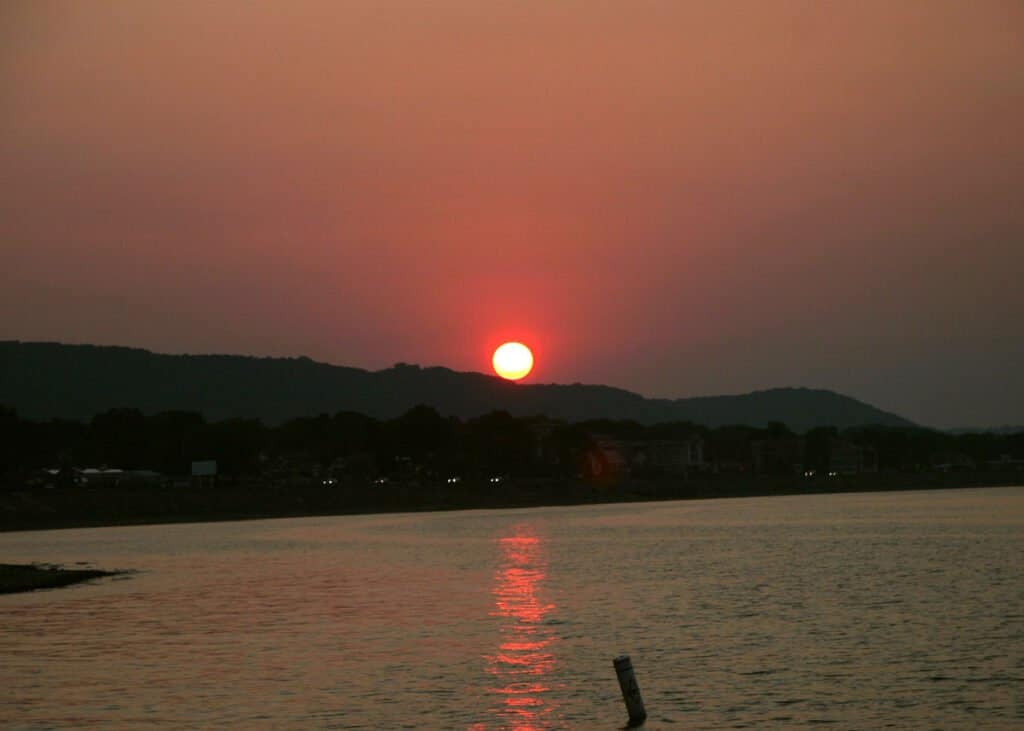
Lake Pepin occurs on the Mississippi River and has a surface area of 29,296 acres
©iStock.com/Jacob Nichols
Lake Pepin is located on the mighty Mississippi River bordering Wisconsin and Minnesota. According to the Minnesota DNR, the lake has a surface area of 29,296 acres (118.56 square kilometers), measuring a length of 21 miles (33.80 kilometers) and an average width of 1.7 miles (2.74 kilometers). The lake has its lowest point at 60 feet (18.29 meters) and an average of 21 feet (6.40 meters). It is a good fishing spot with common species like yellow perch and bass. However, according to Lake Pepin Legacy Alliance, algal blooms are a problem on the lake during months with slower water flow.
5. Petenwell Lake
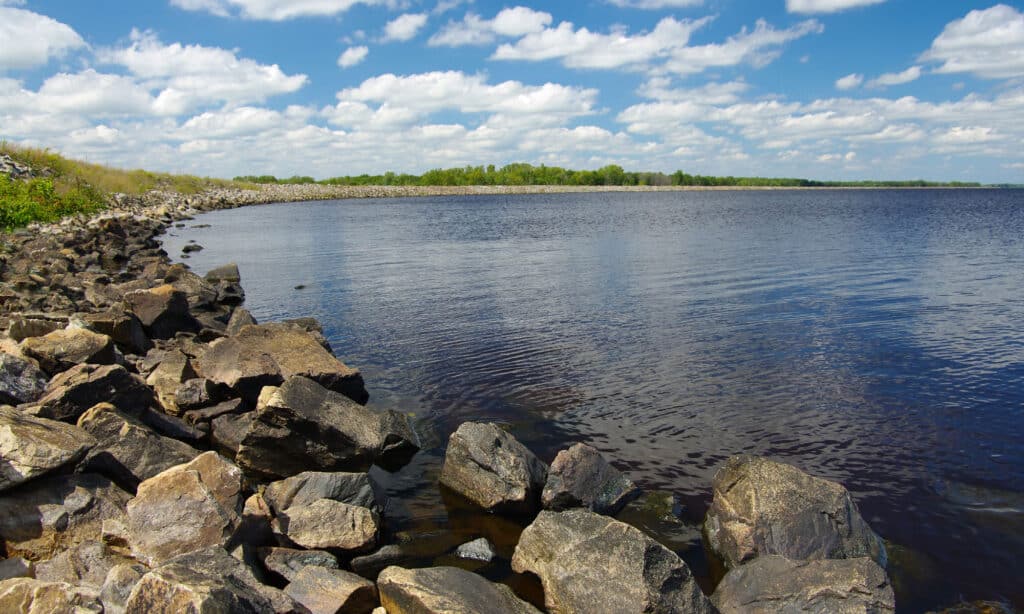
The largest artificial lake in Wisconsin is Petenwell Lake.
©iStock.com/wakr10
Petenwell Lake is the largest artificial lake in Wisconsin, founded in 1948 when a dam was built across the Wisconsin River. The man-made reservoir is located in Adam, Juneau, and Wood Counties and sits next to Castle Rock Lake. According to the Wisconsin Department of Natural Resources, Petenwell Lake has a surface area of 23,173 acres (93.78 square kilometers) and a maximum depth of 44 feet (13.41 meters). Common fish species in the lake are muskie, northern pike, bluegill fish, etc.
Fishes Found in Wisconsin Lakes
Wisconsin is home to over 160 different fish species. This diversity makes the state a hotspot for anglers and fishermen who travel across the many lakes searching for commercial or sport fish. The state has about 13,000 miles (20,921.47 kilometers) of trout streams in which the fish species are abundant and fished.
Other fish species found in Wisconsin lakes are trout, bass (largemouth, smallmouth, white, and rock species), and catfish. The sea lamprey, a destructive and invasive species, is also found in some of the state’s lakes. Wisconsin is also home to several endangered species such as the bullhead.
The largest fish species recorded by the state is the lake sturgeon, which measured 170 pounds and 10 ounces (77.39 kilograms) and had a length of about 6.58 feet (2.01 meters).
Animals Living In and Near Wisconsin Lakes
Wisconsin is home to over 700 wildlife species, and many live in or near the lakes. Some of the animals found within and around the state’s lakes are painted turtles, frogs, black bears, gray foxes, river otters, seagulls, and the great blue heron. Alligators, however, are not naturally occurring in the state, with the few found owned by pet owners.
Debate: Does Wisconsin Have More Lakes than Minnesota?
Minnesota is considered the Land of 10,000 lakes, yet some believe the Gopher State has more lakes than Wisconsin, which has over 15,000 lakes. The difference between the two states seems clear-cut with the estimated numbers, but there is a debate based on the different criteria each state uses to judge lakes. The number of lakes in Minnesota is 11,842, according to the Minnesota Department of Natural Resources. These lakes are 10 acres or larger.
However, Wisconsin has no such limits on lake sizes, counting even ponds as lakes. If the state was subjected to the same lake-size standards as Minnesota, it would have about 6,000 lakes, based on reports.
Up Next:
The 5 Best Fish to Catch in Wisconsin this Summer
The 7 States With the Most Lakes
The 7 Best Wisconsin Lakes for Swimming
The photo featured at the top of this post is © Sean Pavone/Shutterstock.com
Sources
- Pure Michigan, Available here: https://www.michigan.org/article/trip-idea/great-lakes-fun-facts
- Minnesota Department of Natural Resources, Available here: https://www.dnr.state.mn.us/faq/mnfacts/water.html
- Wisconsin Department of Natural Resources, Available here: https://dnr.wisconsin.gov/topic/Lakes
Thank you for reading! Have some feedback for us? Contact the AZ Animals editorial team.






